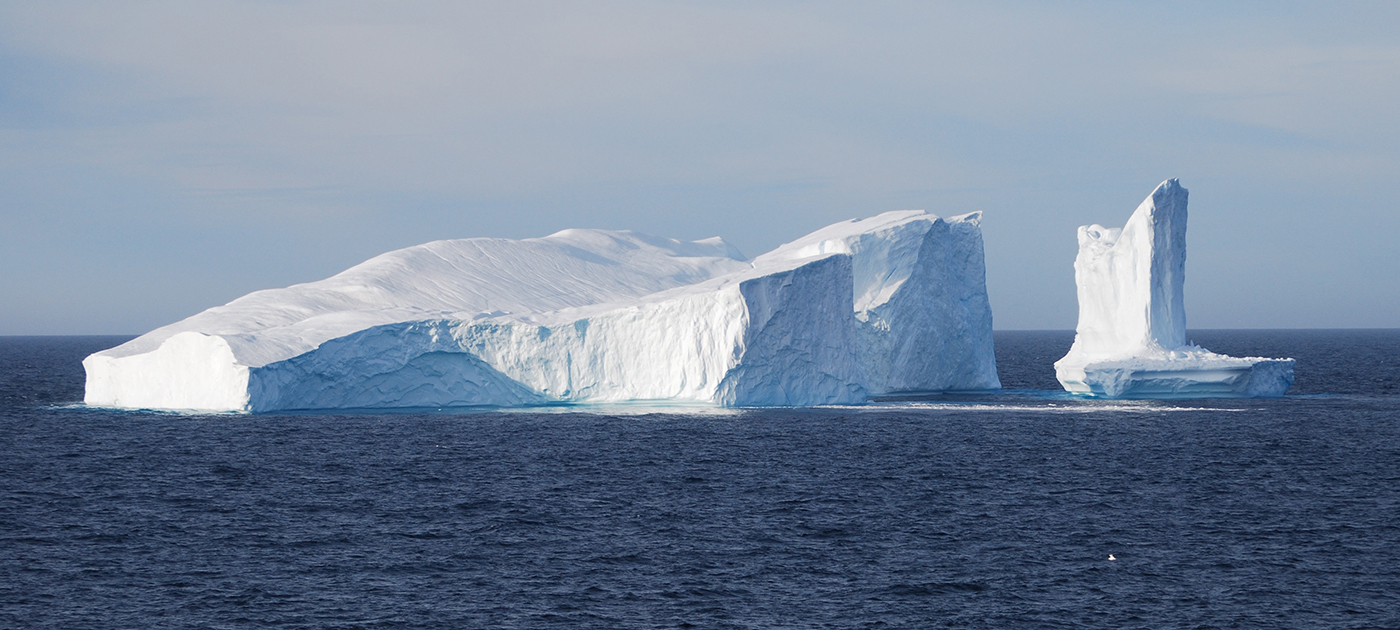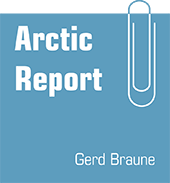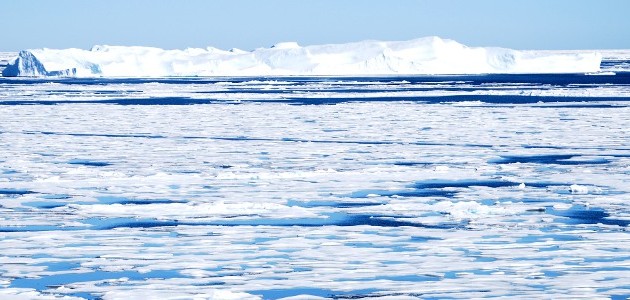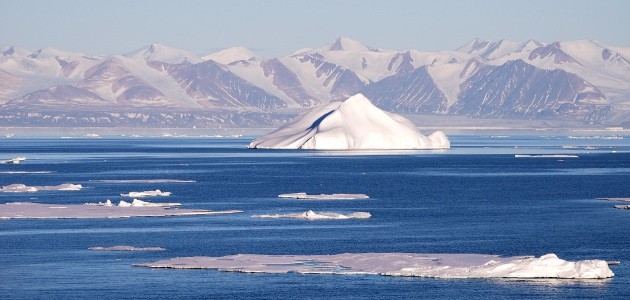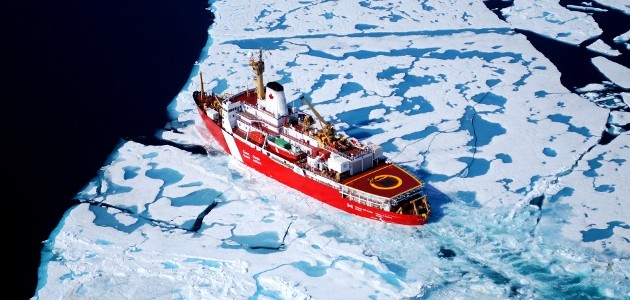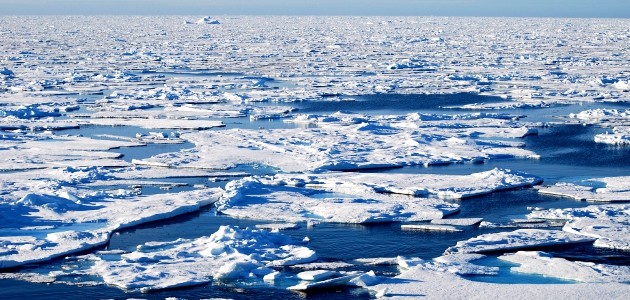Antarctica – the opposite side
– The South Polar Region, counterpart of the Arctic –
The Arctic and the Antarctic are often called “uneven sisters”. The Antarctic is truly the “anti-Arctic”, it is a continent, surrounded by an ocean; whereas, the Arctic is a region with an ocean surrounded by continents. Also politically the Arctic and the Antarctic are far apart: In the north the Arctic coastal states are in the midst of efforts to delineate their territorial rights on the ocean floor. Not so in the Antarctic: Due to the Antarctic Treaty of 1959, all territorial claims have been put aside.
Documents
The Antarctic Treaty: Example for cooperation
More than 50 years agon, on December 1, 1959, twelve countries – in the midst of the Cold War – signed a treaty that is seen as a blueprint for international cooperation: the Antarctic Treaty. In it preambel the signatories recognize „that it is in the interest of all mankind that Antarctica shall continue for ever to be used exclusively for peaceful purposes and shall not become scene or object of international discord“.
→ The Document
The Environmental Protocol for the Antarctic Treaty
A break-through has been the Environmental protocol of 1991 as additional treaty to the Antarctic Treaty. The states commit themselves to a comprehensive protection of the environment of the Antarctic and related eco-systems. The Antarctic should be a „natural reserve, devoted to peace and science“. Article 7 prohibits the expoitation of mineral resources: „Any activity relating to mineral resources, other than scientific research, shall be prohibited.” What a contrast to the Arctic and its “goldrush”.
→ The Document
Further development: An Antarctic Treaty System
Through additional conventions the Antarctic Treaty developped into an “antarctic treaty system“. Part of this system is the Treaty on the protection of the antarctic flora and fauna, a convention on the protection of the antarctic seals and the “Convention on the Conservation of Antarctic Marine Living Resources”.
→ The Document
The report “Antarctic Climate Change and the Environment”
The first comprehensive review of the state of Antarctica´s climate and its relationship to the global climate system was published end of November 2009 by the Scientific Committee on Antarctic Research (SCAR) in London. The review „Antarctic Climate Change and the Environment“ represents the latest research from the icy continent, states the Alfred Wegener.Institute. It identifies areas forresearch aand addresses the urgent questions that policy makers have about Antarctic meltig, sea-level rise and biodiversity.
→ Press release of the Alfred Wegener Institute
→ The review of the Scientific Committee on Antarctic Research
New weak point of the Antarctic ice sheet
According to climate researchers of the Alfred Wegener Institute for Polar and Marine Research in Bremerhaven (Germany), the Filchner-Ronne Ice Shelf fringing the Weddell Sea, Antarctica, may start to melt rapidly in this century and no longer act as a barrier for ice streams draining the Antarctic Ice Sheet. These predictions by the researchers are published in the coming issue of the British science magazine “Nature“. They refute the widespread assumption that ice shelves in the Weddell Sea would not be affected by the direct influences of global warming due to the peripheral location of the Sea, reads a press release of the Alfred Wegener-Institute.
→ Press release of the Alfred Wegener Institute
My articles about Antarctica – German only
Dem Kontinent unter Eis drohte die Aufteilung in Interessensphären
Vor 50 Jahren unterzeichneten zwölf Staaten in Washington den Antarktis-Vertrag
Ottawa, 30. November 2009. In den 50-er Jahren hatten bereits mehrere Staaten Hoheitsansprüche am Südpol angemeldet, so dass die Aufteilung des unter Eis liegenden Kontinents drohte. Die Wissenschaftler, die im Internationalen Geophysikalischen Jahr 1957/58 in der Polarforschung kooperiert hatten, erhoben dagegen aber ihre Stimme – und die Politik folgte. Die beteiligten Staaten arbeiteten den Antarktisvertrag aus. Er wurde am 1. Dezember 1959 in Washington von Argentinien, Australien, Chile, Frankreich, Großbritannien, Neuseeland und Norwegen, die bereits Gebietsansprüche erhoben hatten, sowie Belgien, Japan, Südafrika, der Sowjetunion und den USA unterzeichnet. Am 23. Juni 1961 trat der Vertrag in Kraft. Inzwischen sind weitere 34 Staaten beigetreten, so dass es jetzt 46 Vertragsstaaten gibt.
→ Lesen Sie weiter
Ozonloch hat Großteil des Südpols von globaler Erwärmung abgeschirmt
Schnellere Erwärmung der antarktischen Strömung
Ottawa, 30. November 2009. Südpolarforscher haben eine für sie verblüffende Entdeckung gemacht: Das Ozonloch hat bisher weite Teile der Antarktis vor den Folgen des Klimawandels abgeschirmt und einen kühlenden Effekt gehabt. Mit der Erholung der Ozonschicht aber wird dieser Schutzschild verschwinden. Zugleich wird der Verlust von Eis in der westlichen Antarktis bis 2100 vermutlich mit „einigen zehn Zentimetern“ zum weltweiten Anstieg des Meeresspiegels beitragen.
→ Lesen Sie weiter
